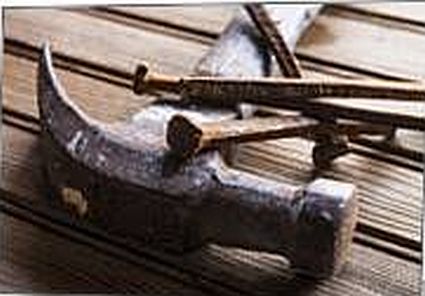We, including me, have always focused much of our product development and GTM strategies around the concept of “Product-Market Fit.” Suddenly, I realized there is a much better way to look at this.
The challenge with the concept of Product-Market fit is that it biases the way we look at things. As a result, it biases the solutions we create, the way we bring them and present them to market, and how we position ourselves in the markets. Ultimately, our focus is all about the product. As a result, we get into the old “If all we have is a hammer, then everything starts looking like a nail,” mindset.
What if we started thinking of “problems?”
In doing this, we define everything we do around the concept of, “What are the problems we are the best in the world at solving?”
Let’s spend a moment looking at this. Why is it better to think in terms of problems? Some thoughts:
- This is the way our customers and our markets first tend to think of things. They are experiencing problems or challenges, they see new opportunities. Aligning ourselves with how our customers tend to look at things is critical to identifying what’s important to them.
- Thinking about problems, changes our perspectives about the solutions we develop. We are no longer restricted to a product focused view. Rather, we can look at a range of things that we can do to solve the customer problems. We can look at a range of products and/or services that address some or all of the customer problems/challenges.
- Being freed of a product focus to a problem focus opens a whole new range of possibilities. Going back to the tire but useful Hammer analogy. Now we can start thinking, “The customer needs to hang or attache something. what are the range of solutions we might provide to enable them to do this. Certainly hammers/nails, but perhaps screwdrivers and bolts… Or maybe they really don’t want to create a hole in the wall, maybe we might create adhesive hangers….” This opens our thinking to a wide range of solutions we might provide, addressing different nuances in the way the customer may look at solving their problems. It could also cause us to think, “What if we created an offering where we did the work for the customer?”
Then, the next question we pose, “Who are the customers (organizations and personas) that have these problems?” Again, focusing on product enables us to take a much richer view of the market. As I’ve mentioned, customer don’t think in terms of products, the think in terms of problems. As we assess our target markets and develop ICPs, we can more easily define these. We can identify the problems and challenges they face, we can understand the impact and urgency they might have in addressing these problems.
This also provides us the ability to move from a retrospective to forward, growth oriented mindset. We can only define product market fit in the context of the characteristics of those who have leveraged these types of products in the past. By looking at a problem market fit, we can look at who is likely to have these problems–even though our solutions may be unproven in their markets.
What is your “Problem-Market Fit?”

Product-Market ”GAP & FIT’, is where its at.
If there is NO GAP, you’re unlikely to find a FIT.
I, working with clients, try to find TWO GAPS:
The Problem GAP: past, present, and FUTURE.
The Opportunity GAP: Past, Present and FUTURE.
Where are you NOW?
Where do you want to be?
HOW are we going to get there?
This is a conversation anyone can have with the CEO, or any C level person.
During this discussion a ‘Perfect’ fit will appear.
Yet, beyond the ‘Ideal’ or perfect FIT, lies the ADAPTIVE FIT,
and that’s where YOU sell YOUR product because YOU changed the GAP.
Great Topic, Dave
Love the way you phrase this Brian. You’ve got my mind spinning on new articles!